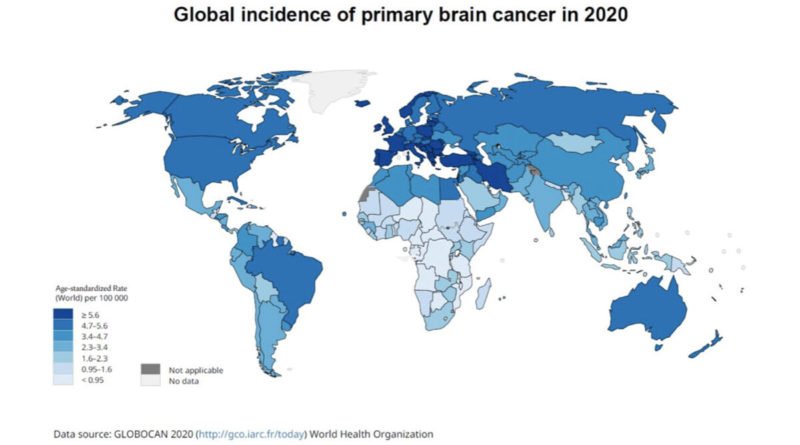Brain Cancer Is Closely Related to Cell Phone Usage
A study by the School of Medicine of the Chinese University of Hong Kong discovered that the incidence of primary brain cancer was higher in high-income jurisdictions, and was closely related to the per capita gross domestic product (GDP), the human development index (HDI) and the prevalence of traumatic brain injuries, occupational carcinogen exposure and mobile phone use at the country level.
Global incidences of primary brain cancer have been relatively stable over recent years, but an increase was observed in younger males in high-income countries. The research suggests that risk factor control and early cancer detection should be implemented among high-risk populations.
Although primary brain cancer is not common, the survival rate is much lower than any other type of cancer. The medical community still does not understand the primary cause of brain cancer.
According to the data of the Hong Kong Hospital Authority, an average of 240 new cases of primary brain cancer and 115 deaths in Hong Kong were recorded every year between 2011 and 2020.
The university research team referenced international databases from the Global Cancer Observatory, the World Health Organization Mortality Database, and the World Health Organization Global Health Observatory for the research on brain cancer. Using the collected data, they calculated and analyzed the age-adjusted incidence, mortality rate, and prevalence of various brain cancer risk factors.
The discovery found disease burden caused by brain cancer varied in different regions. Among the countries, the incidence rate in southern Europe is the highest, while the mortality rate in West Asia topped the analysis.
The result also showed that brain cancer is directly proportional to GDP, HDI, traumatic brain injury, occupational carcinogen exposure, and cellphone usage. Countries or regions with more significant risk factors would also have higher mortality rates.
The study also found that the incidence rate of young males in developed countries has been increasing. Using the Average Annual Percentage Change (AAPC) for comparison, the largest increase in incidence rate among males was found in Slovakia (4.4). Among females, the largest increase was found in Denmark (3.4).
The Average Annual Percentage Change is a measure of the overall changes in cancer incidence or mortality during a specific period. For example, if the incidence AAPC of certain cancer in a country is five for the past 10 years, it means that the incidence in that country increased by 5 percent on average each year over the 10-year period.
Notably, a relatively larger increase was found in males aged 50 years and younger, which was most pronounced in Slovakia again. The trend in mortality from primary brain cancer has been stable rather than showing an obvious decreasing trend.
Dr. Jason Huang Junjie, the first author of the study and research assistant professor from the Jockey Club School of Public Health and Primary Care at the Chinese University of Hong Kong Medicine, said, “The incidence of and mortality from primary brain cancer varies by region, which may be related to detection and diagnosis ability and the prevalence of risk factors in each place. However, the causes have not been established yet and require further investigation.”
Professor Martin Wong Chi-sang, the senior corresponding author of the study, added, “Policymakers in different regions should implement evidence-based, targeted prevention strategies to control relevant risk factors.”
The brain cancer research, carried out by the Chinese University of Hong Kong, in conjunction with the Association of Pacific Rim Universities, was published in the Internationally Authoritative Medical Journal, Society of Neuro-Oncology, on Sept. 1, 2022.





